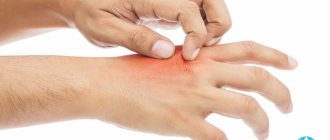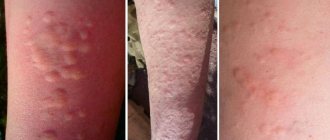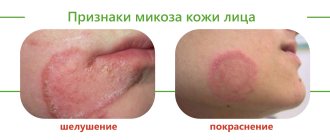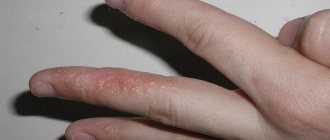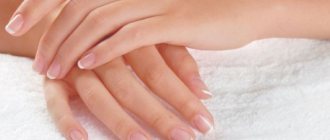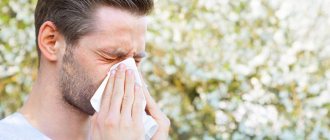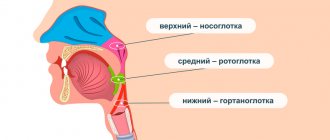Various types of acne are a very common problem among many people of different ages. Water pimples on the legs and body can appear in both men and women, causing considerable discomfort.
There are many reasons for their appearance, but in any case, these neoplasms require certain treatment. How to get rid of pimples on legs?
Causes
The occurrence of bubbles can be caused by a large number of factors (see Table 1).
| Factors | Causes |
| Mechanical impact factors | Pressure Friction due to wearing tight shoes Corsets, tightening bandages Gypsum |
| Factors of physical impact | Effect of high or low temperature |
| Chemical exposure factors | Acid, alkali, some metals |
| Biological influence factors | Flowering of various plants Insect or reptile bites |
| Allergic agent | The skin may react by forming blisters to the specific smell of new shoes, nail polish, spray or shoe polish, etc. |
| Skin mycoses | Fungal infections of the dermis are a common cause of blisters. The fungus can be picked up in public places without shoes and high humidity. |
Identifying the cause is important in the further treatment of blisters.
How to determine the onset of foot fungus, watch the video:
Reasons for education
Watery blisters appear suddenly and begin to itch, causing a person to experience physical and mental discomfort.
Painful growths on the skin, filled with a clear liquid called lymph, are localized throughout the body, depending on the cause:
- Prolonged friction with the surface. Blisters on the toes appear due to rubbing from shoes. The problem often occurs when breaking in new boots or wearing high-heeled shoes.
- Fungal infection. Infection occurs while visiting public baths, saunas or swimming pools without personal protective equipment. At an early stage, the fungus causes redness and peeling of the skin in the interdigital area, then small swellings appear. When infected with a fungus, unbearable itching and burning are characteristic.
- Infectious skin diseases. Infectious diseases can lie in wait in places where there are large crowds of people - on the beach or in a water park. It manifests itself as irritation on the phalanx in the form of small red pimples, which can increase in size, smell and spread throughout the body.
- Sunburn. Prolonged exposure to the sun without applying special creams with SPF protection can result in the appearance of watery blisters on the body as a result of a severe burn.
- Insect bites. Blood-sucking insects leave a mark in the form of red tubercles after injecting poisonous saliva. The bubbles may increase in size with intense scratching. Baby's delicate skin is especially susceptible to large blisters containing white fluid.
- Allergic reaction. Irritation and painful swelling may occur upon contact with the allergen. Chemicals or the introduction of unknown foods into the diet of infants can trigger allergies, characterized by skin rashes.
Callus formation
A callus is formed exclusively by prolonged mechanical action on the skin (friction, squeezing).
There is a distinction between dry callus, which appears in the form of necrosis of keratinized epithelial cells, and vesicular callus, which contains callus fluid in its cavity. Fluid collects over the area where the skin is damaged. This protective mechanism helps prevent further damage to the skin and gives the tissue underneath the fluid time to regenerate.
A wet callus may be red in color. This is explained by the admixture of blood in the callosal fluid due to the close proximity of blood capillaries during skin trauma.
Blisters on the feet are the result of wearing tight or new shoes.
Fungal infection
It is a common cause of blisters on the legs. You can become infected in public places with high humidity: swimming pools, saunas, pedicure rooms, beaches. Men are prone to mycoses of the legs 2 times more often than women. This is due to the fact that the stronger sex wears more closed and poorly ventilated shoes.
Infection of the feet with fungi occurs through tiny flakes of the epidermis from the feet of a sick person through public places. After the scales enter a humid environment, the fungus begins to multiply intensively. Mycoses of the feet are localized in the folds of the fingers. Once in the fold, the fungus grows rapidly and begins to cause a burning sensation, and then the formation of blisters.
Allergic reaction
The appearance of blisters on the legs of allergic origin occurs as a result of skin contact with an allergen. Once in the body or on the skin, the allergy-causing agent increases the level of immunoglobulin, histamine and increases the level of inflammatory mediators. All this leads to irritation of the skin papillae and the appearance of blisters. The permeability of blood vessels increases, blood elements enter the intercellular space and cause swelling.
Allergies on the legs in the form of blisters appear in the following situations:
- Tight shoes made from artificial materials
- Increased sweating of feet and non-breathable shoes
- Exposure to chemical elements contained in shoe polish, foot deodorant, nail polish, etc.
- Allergy to cold or heat
Types of allergic rashes on the legs:
- Dermatitis caused by an allergen. Against the background of redness, ulcers, burning, and crusts appear on the skin.
- Hives. In the form of burgundy or pink blisters. Characterized by severe itching and local skin lesions.
- Reaction to cold. Local swelling and a small watery rash occurs.
Treatment recommendations
Acne on the feet is often confused with dry calluses, so self-medication is ineffective. To get rid of profuse rashes on the body and legs as soon as possible, it is recommended to adhere to the following rules:
- choose clothes and shoes only from natural fabrics;
- give up heels at least for a while;
- change skincare products;
- if possible, take air baths as often as possible.
It is also recommended to replenish the vitamin balance in the body. To do this, you need to take vitamin A and vitamin E. Prevention is no less important for eliminating dropsy.
The first thing you need to do is cleanse your body by reviewing your daily menu. Instead of junk food, you need to include in your diet foods rich in minerals and vitamins. It is better to completely exclude fried, spicy and highly salty foods from the diet, as they negatively affect the condition of the skin and the functioning of the digestive system.
Regarding sweets, dermatologists say that they take away beauty. Many studies have proven that people who often eat chocolate and sweets often suffer from acne, acne, clogged pores and other skin diseases.
It is imperative to add fermented milk products to your daily diet. It improves the functioning of the gastrointestinal tract, helps cleanse the body, eliminates toxins and speeds up metabolism. As a result, the skin looks more rested and the number of breakouts is significantly reduced.
To prevent the appearance of acne on the feet, as well as corns, it is recommended to regularly cleanse the skin with scrubs, peels, and pedicures. At home, you can use pumice, a heel file, or steaming for this.
Human skin is very susceptible to external and internal irritants. Therefore, if you notice any inflammation, pimples or redness, you need to listen to your body. Perhaps this is just a symptom of a serious disorder or pathology that can be dangerous to human health and life.
Insect bites
Insect bites can cause swelling and blistering on the surface of the skin. Moreover, each insect has its own specific bite mark (Table 2).
| Insect type | Side effects from the bite |
| Mosquito | Redness, swelling, and itching occur at the site where the mosquito's nose enters. If you do not scratch the bite site, the swelling and pimple go away on their own and are small in size. |
| Midge | Causes severe swelling, itching and redness at the bite site. Then blisters appear, and when scratching them, wounds appear. |
| Wasp, bee, hornet | A white dot appears in the center of the bite, surrounded by redness and swelling. Swelling, when poison enters the bloodstream, can be total throughout the body and even lead to death. |
| Bug | First, small red spots appear, then swelling and severe redness. |
| Ant | When bitten, red spots appear, they are small, but very itchy. |
All insect bites are potentially dangerous and can lead to serious allergic reactions.
How to recognize bites, watch the video:
Types of blisters on feet
Blisters on the legs always indicate one or another pathology of the body. Which one can be differentiated by the shape and color of the rash:
- A whitish vesicle with a diameter of no more than 0.5 mm with liquid inside indicates the presence of diseases such as herpetic disease, dermatitis caused by allergies, and varicella zoster virus.
- A bubble containing pus in its own cavity indicates an infectious lesion of the skin of the legs caused by a bacterium.
- A blister is a transparent bubble. Occurs due to friction, insect bites, allergies.
- A node with a change in skin texture and peripheral color indicates a wart, papilloma or skin eczema.
Kinds
The types of blisters depend on the severity:
- lungs. Water calluses and insect bites do not pose a threat if timely measures are taken to eliminate the problem;
- average. Blisters that appear from prolonged exposure to the scorching sun are considered a 2nd degree burn and require medical help, especially in cases of children. Fungal infections on the legs can spread quickly, making treatment much more difficult;
- heavy. A severe allergic reaction can cause Quincke's edema, which can be fatal. At the first signs of an allergy, you should urgently seek medical help. Infectious skin diseases are contagious and require immediate treatment to avoid spreading to the surface of the body and introducing additional infection. This may cause blood poisoning.
Treatment of watery blisters
Treatment varies depending on the factor causing the blisters on the legs themselves.
If the blisters are caused by an allergy, oral antihistamines are prescribed. Their action is aimed at blocking histamine, which triggers the formation of inflammatory blistering formations on the skin.
In order for the treatment to be as effective as possible, it is necessary to find and eliminate the very cause of the allergy, that is, the allergen. These can be external factors - flowering, dust, wool, etc. And internal factors, the entry of allergen into the body. For this purpose, it is necessary to donate blood from a vein to the allergy panel.
For local application directly to the blisters, antihistamine ointments, creams, and hormonal drugs are used.
If the cause of the blisters is a fungus, antimycotic lotions, creams, emulsions are also used locally, and for local treatment of a fungal infection, antimycotic drugs are used orally. It is very important to also take medications that have a detoxifying effect on the body, since fungi, forming spores, release a huge amount of toxins into the body, thereby poisoning it. Sorbents and saline solutions are used to remove toxins.
In case of infectious lesions of the skin of the legs, antiseptic agents are used that destroy the bacteria themselves and prevent their further reproduction. Creams and ointments with antibacterial effects are also used. If local therapy does not bring results, oral antibiotics are prescribed.
Providing first aid
If blisters appear on the patient’s legs, he is advised to ensure their integrity. In no case should you comb them or remove them mechanically, as this can lead to a worsening of the condition.
To prevent the bubble from bursting, it is recommended to ensure that it does not come into contact with clothing and shoes. When a new growth appears, it is recommended to cover it with a band-aid.
When the bubble reaches a large size and is excessively swollen, certain manipulations can be carried out to remove it. Before doing this, it is recommended to wash your hands with soap.
After this, it is recommended to dry them thoroughly and disinfect them using a special alcohol-based cosmetic product. It is also recommended to wipe the medical instrument with alcohol.
In most cases, an ordinary sewing needle is used to carry out the manipulation.
Punctures are made in places that are characterized by the location of healthy epithelium nearby. After the puncture, it is recommended to press the bottle lightly with your finger until the liquid flows out of it.
During the manipulation, it is strictly forbidden to remove the skin that covered the bubble. This will ensure the fastest possible process of tissue regeneration and healing.
Why blisters may appear on the soles of your feet, watch this video:
In order to ensure speedy healing, Levomekol is applied to the site of the bubble. It is recommended to seal it with adhesive tape on top. To avoid the inflammatory process on the epithelial surfaces, daily change of the dressing is recommended.
In this case, it is strictly forbidden to allow water to get under the patch. Patients are advised to periodically open the wound for 10-20 minutes to allow it to dry.
Puncture of a blister is a fairly simple procedure that can be performed by anyone. An important aspect in this case is compliance with hygiene standards.
Features of the treatment of blisters on the legs
If a patient develops a large number of tumors, it is recommended that they be treated without fail. In this case, it is recommended to follow certain rules.
To eliminate the unpleasant symptoms of the disease, the following is used:
- Lavender oils. It is recommended to apply it to the affected area and stick a patch on top. This medicine will be most effective if it is pre-mixed with products such as an oil solution of vitamin E or castor oil.
- Cream, the main component of which is aloe.
- Panthenol. With the help of this medication, the possibility of inflammatory processes occurring in places where tumors form is eliminated.
- Gewol healing patch. It is characterized by the presence of a special gel-forming substance, with the help of which the fastest healing of tumors is achieved. Thanks to the use of this medicine, not only pain is eliminated, but also the most effective protection of the epithelial covers from the negative influence of environmental factors is ensured.
Folk remedies
To eliminate tumors on the legs, traditional medicine is often used, which is characterized by high efficiency. In most cases, patients are recommended to use:
- Salt baths.
They are characterized by the presence of an antimicrobial effect, and also dry blisters with the highest quality. To carry out a bath, it is recommended to pour water into a basin, add salt and soak the affected area for 15-20 minutes. The procedure should be carried out three times a day. - Sequences. To prepare the medicine, it is recommended to take the dry crushed above-ground part of the plant in the amount of one tablespoon and pour a glass of boiling water. The medicine is infused for half an hour. The product is used for baths and lotions.
- Potassium permanganate. Baths are made using this product. To do this, potassium permanganate is added to warm water until it turns pink. It is recommended to take baths before bed every day. Their duration should be 10 minutes.
Traditional and folk medicine are characterized by a high effect in the treatment of neoplasms.
To avoid side effects, it is recommended that you consult your doctor before using a particular medication.
What is prohibited to do
When tumors appear in the leg area, it is recommended to adhere to certain prohibitions. A person is prohibited from piercing a blister with a needle without first disinfecting it.
After the bubble has burst, it is recommended to apply an antibiotic to it and cover the wound with a band-aid. It is strictly forbidden to leave it open, as this can lead to infection. After piercing the bubble, a film remains, which is not recommended to be torn off.
Doctors are prohibited from scratching blisters.
In order to eliminate itching, it is recommended to take appropriate antipruritic medications. If a person strictly adheres to the above rules, then the blisters will go away on their own without serious consequences.
Providing first aid
If blisters appear on the legs or other parts of the body, do not squeeze or burn them. You need to observe and analyze the nature of the bubbles for several days. If after 2 days the bubbles do not go away on their own, you should consult a doctor.
To disinfect areas with bubbles, you can use baths with a weak solution of potassium permanganate. And to relieve itching and redness - antihistamines externally and internally.
What to do if the pimples itch
Unbearable itching forces you to scratch the area of inflammation. This is prohibited; the risk of infection increases from contact with dirty hands. You can use menthol-based cooling medications. Or turn to traditional medicine, which additionally has a therapeutic effect. Compresses from a decoction of medicinal herbs, soda baths and rubbing with an ice cube significantly alleviate the condition and promote rapid healing.
It is not recommended to pierce the bladder at home; complications may arise if hygiene rules are not followed. If pus has accumulated, you should contact a specialist who, in a hospital setting, will make an incision with a sterile instrument and treat the wound with antiseptic agents to form a protective crust.
Drugs
The most effective and popular means are presented in Table 3.
| Group | Name |
| Antihistamines | Fenistil Advantan Diazolin Suprastin Cetirizine |
| Antimycotic drugs | Clotrimazole Terbinafine Diflucan Nystatin |
| Local antibacterial drugs | Levomekolev ointment Tetracycline ointment Salicylic gel/paste |
| Burn medications | Pantestin Bepanten Ranozhivin |
Video about the treatment of pemphigus:
